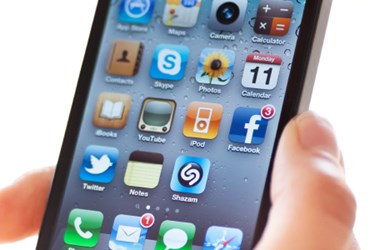Mayo Clinic Demos App At Apple's iPhone 6 Event

By Christine Kern, contributing writer

Mayo-Apple Collaboration Designed to Expand Consumer Outreach.
As announced in June, Apple has partnered with the Mayo Clinic and Epic Systems to create the Health app and HealthKit, both of which has been in the works for two years. John Wald, M.D., medical director for public affairs at Mayo Clinic, told Health Data Management at Apple’s product launch earlier this month, “It’s been a relationship that’s been built over a number of different years.
“Our initial relationship with Apple was built out of a couple of things: one, their appreciation of our own current Mayo Clinic patient app which allows our patients to see their health data and information, particularly their lab results and radiology tests; and, in addition, Apple is interested in the way that we use their platforms – both iPhones and iPads – within our clinical services to allow the health records to be brought directly to the patient bedside.”
The new Apple products come with a Health, an app that holds data collected either by the gadgets or entered by a user. Mayo will show how data from Health can flow into the more sophisticated management system of a major health center.
The new Health app gives a dashboard of your health and fitness data. There is also a new tool for developers called HealthKit, which allows all the health and fitness apps to work together, and work harder. It just might be the beginning of a health revolution. According to Mayo CEO, Dr. John H. Noseworthy, “Apple's Health and HealthKit development tools have the potential to ‘revolutionize how the health industry interacts with people.’”
Mayo already has a patient app available on iTunes that allows patients to access their test results and make appointments, among other functions. By the end of September, Mayo plans to broaden its patient app into a consumer app which will allow people to view information about services Mayo provides.
By first quarter of next year, it also could include a variety of pilot projects to interact with patients and consumers in such areas as obesity, diabetes, cardiac disease, and asthma. For example, the clinic might look at ways to reach obese patients and “stimulate their interest” in better diet and exercise, said Wald. That interaction will come via the iWatch or other remote-monitoring devices.
“We will see what the iWatch brings from the remote-monitoring perspective. I think the iWatch is one tool to begin to remotely monitor these patients,” Wald said.
Some remain skeptical about the potential for the broad category of wearable devices that monitor consumer health. For example, January report from Endeavour Partners notes the “dirty little secret” of already available wearables was that half of buyers stopped using the gadgets after two years. “Users quickly abandon wearables that don’t help them make positive changes,” particularly through inducing behavioral change, the report noted.
Mayo plans to “make sure we have some mechanism of consistently validating the devices that allow us to remotely monitor patients, to make sure first and foremost that the data we’re receiving is accurate.” Additionally, Wald said he felt Apple’s HealthKit app will allow users to define what will be relevant data to the patient.
“I personally believe it will be up to providers and … users of digital to find what fits best,” he said.
With those caveats in mind, Wald said the collaboration with Apple will be helpful for the clinic. “As the exchanges and narrow networks come to fruition, patients and consumers are going to be a lot more savvy about their healthcare choices,” he said. “Interacting with Apple allows us to reach those consumers and patients in a different way than we have.”
